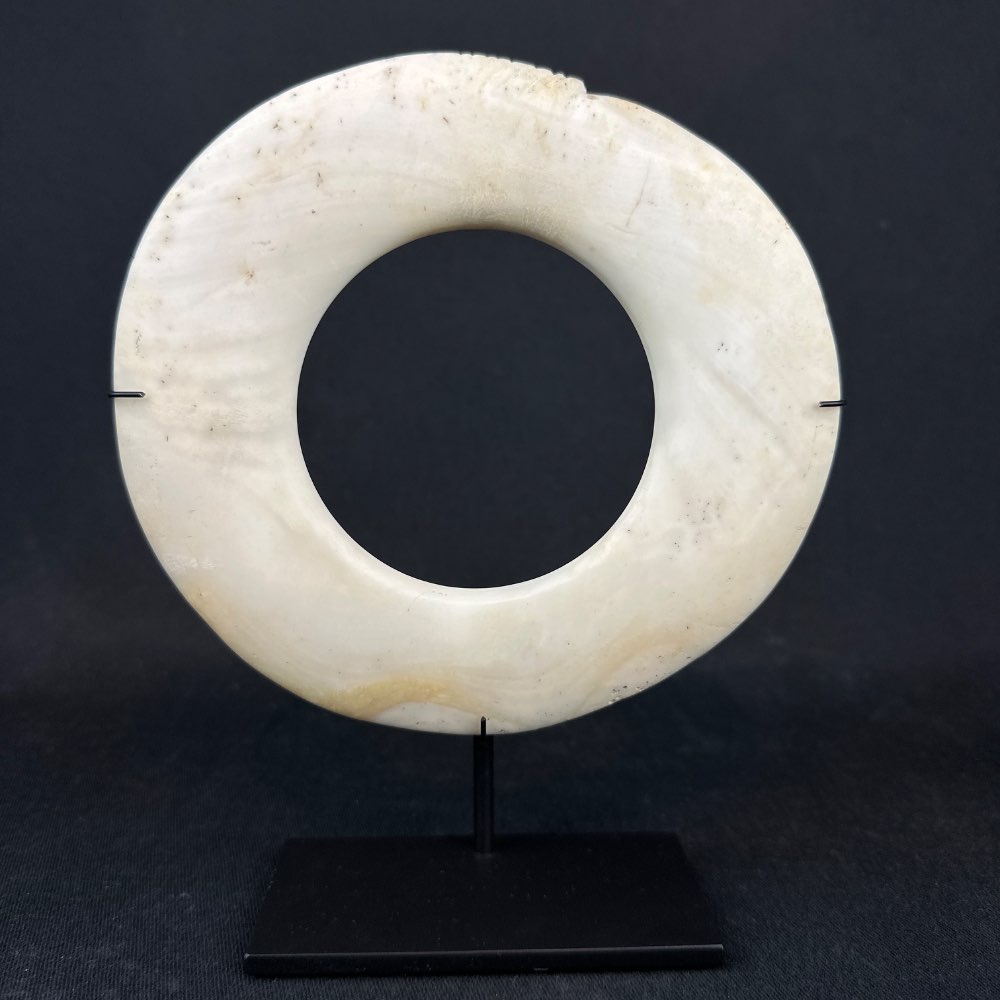



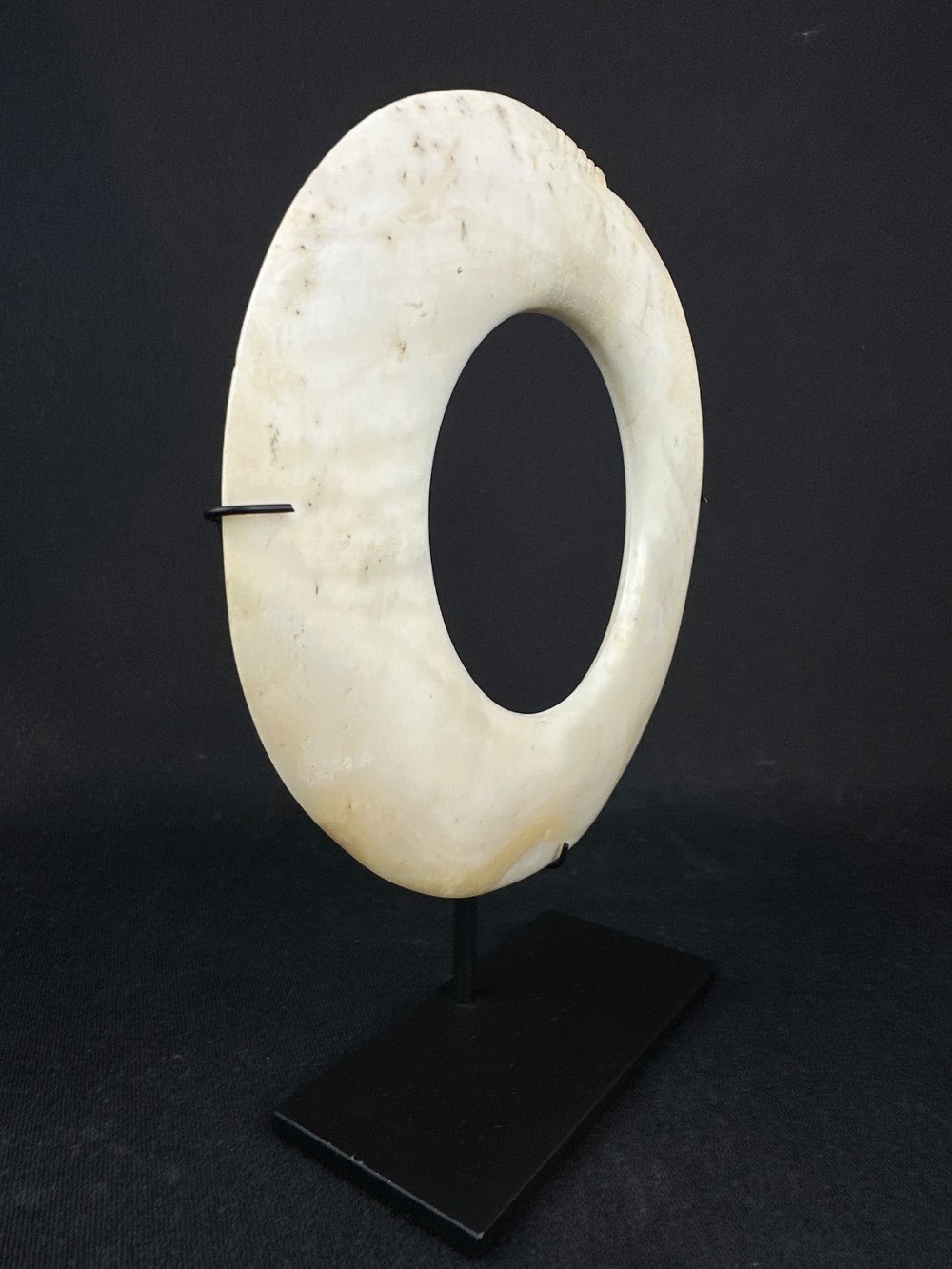
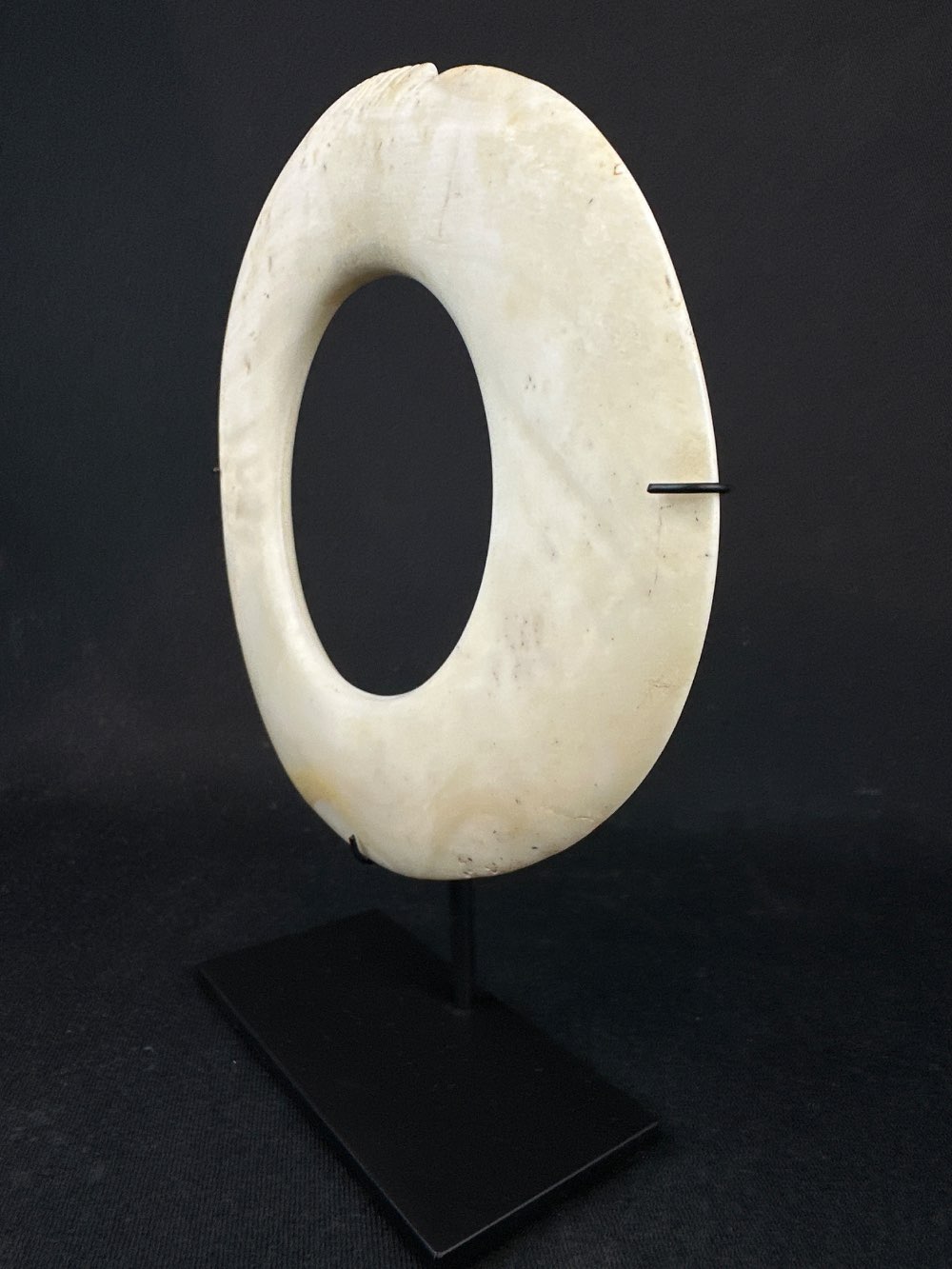
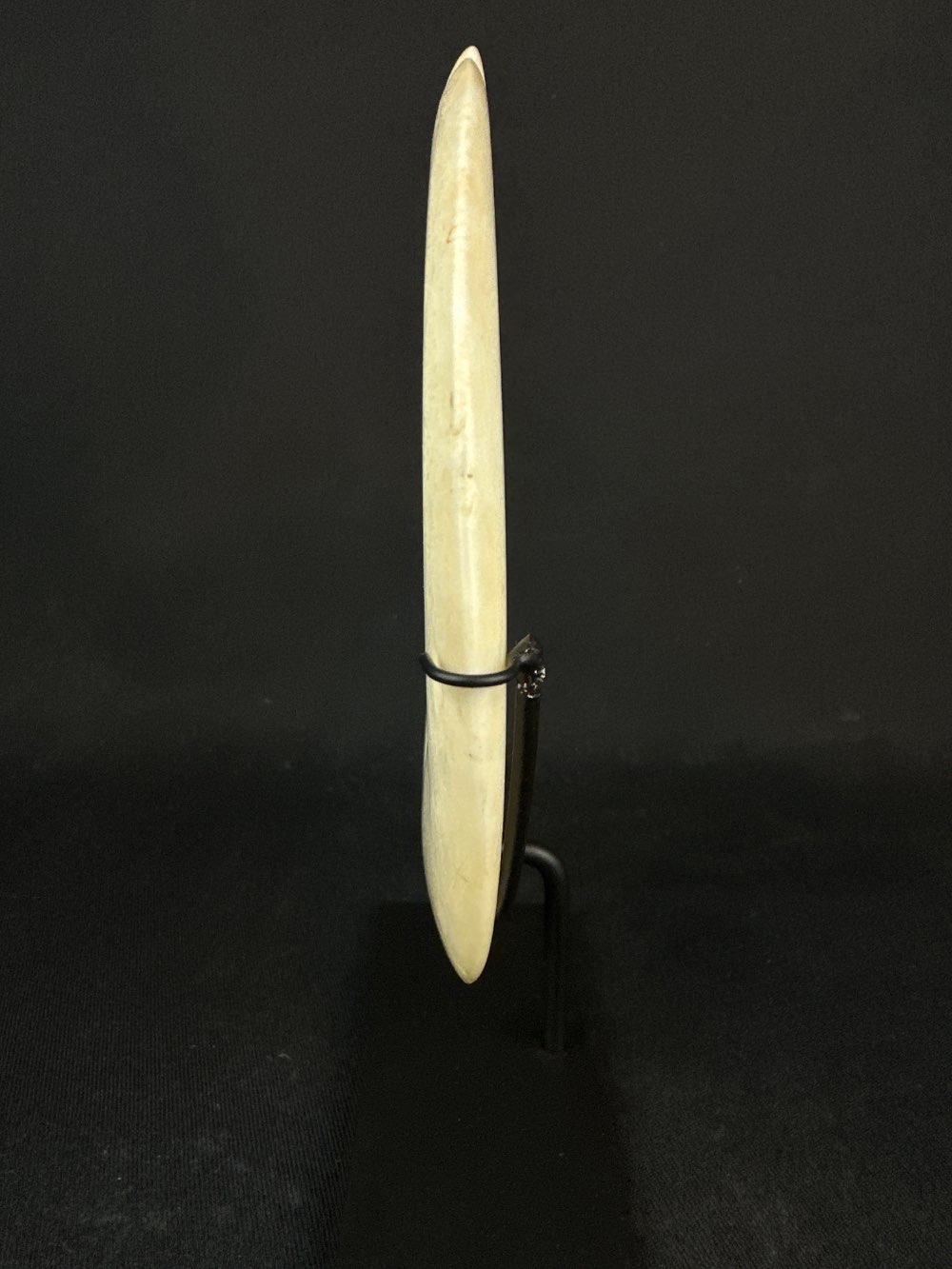
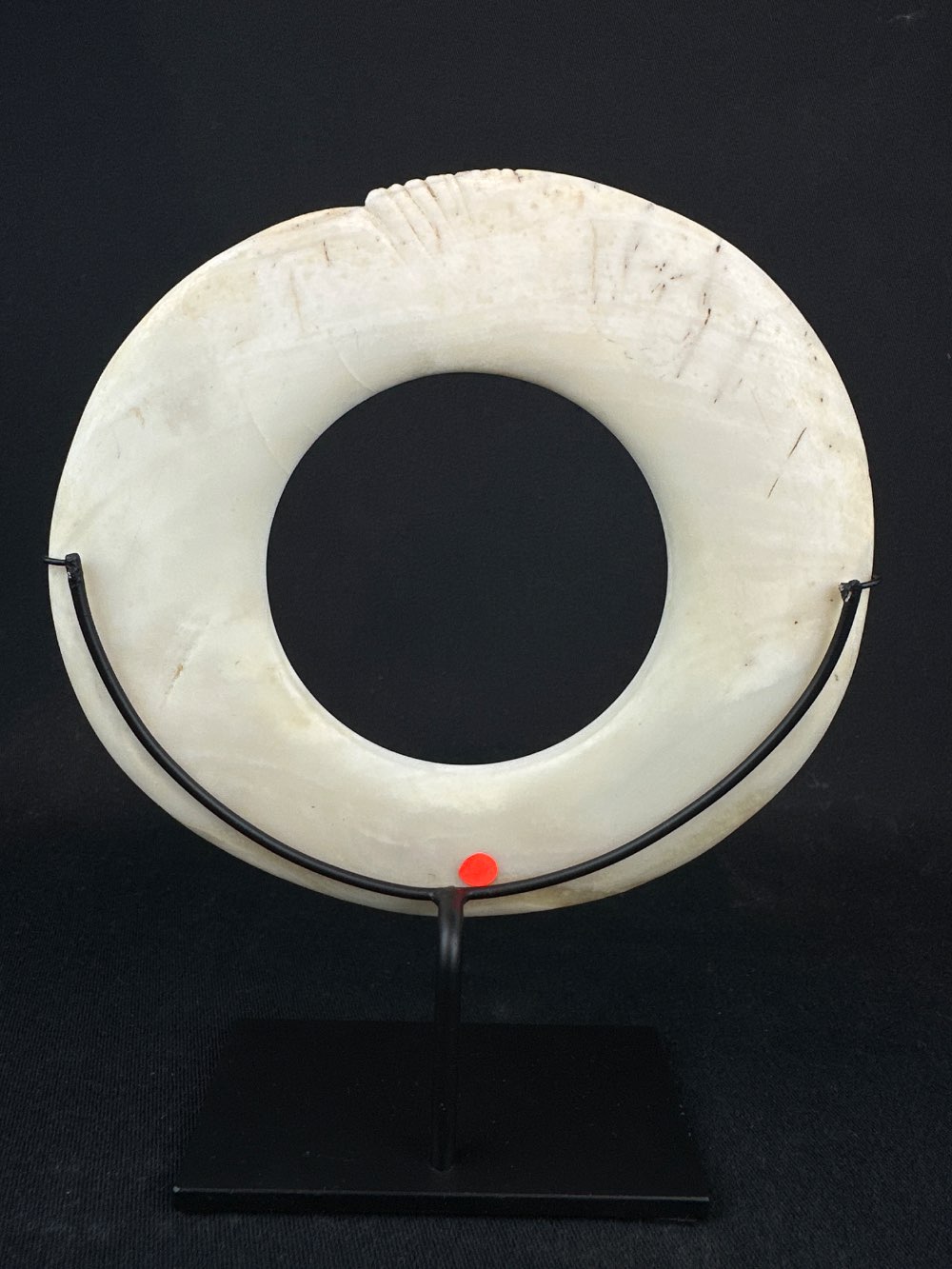
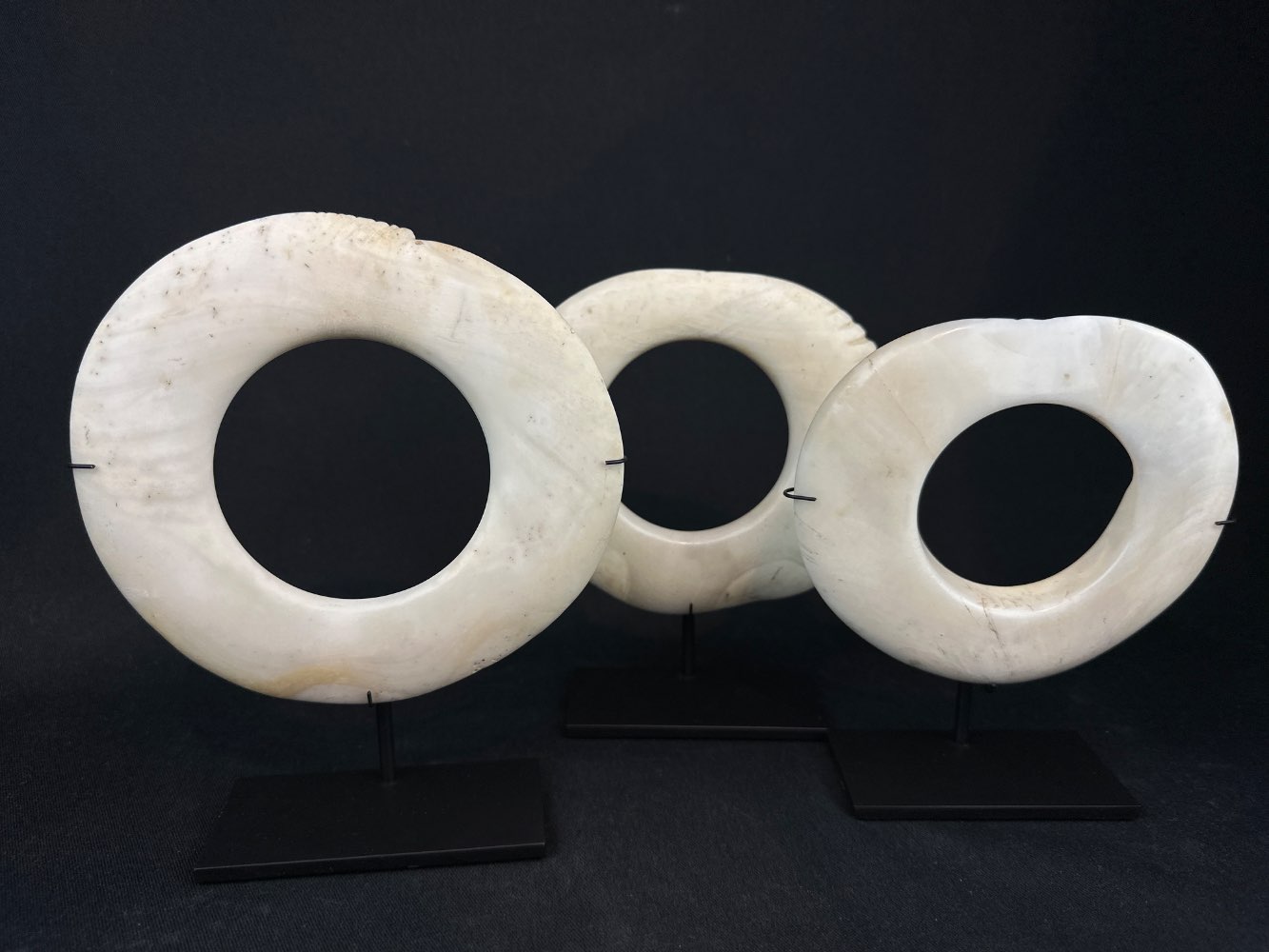

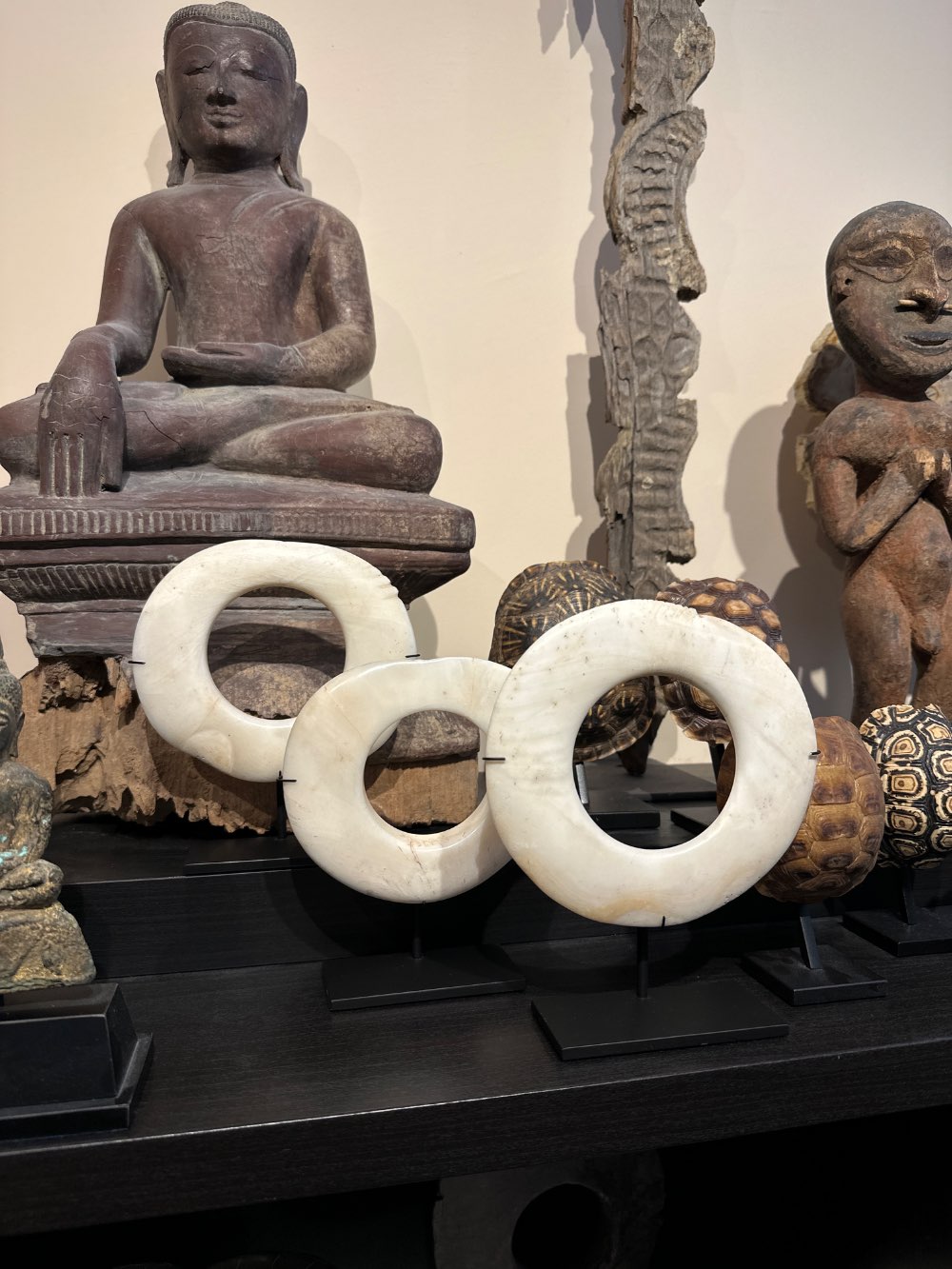

Double click image to enlarge
An Abelam shell currency ring "YUA", East Sepik
An Abelam shell currency ring "YUA", East Sepik
- Country: Papoea New Guinee
- Region: East Sepik
- Culture: Abelam tribe
- Period: first half 20th century
- Material: Shell Tridacna Gigas
- Size: 144 x 155 mm (19 cm incl. stand)
- Size inner ring: 75 mm
- Weight: 270 gram
- Custom made stand included
- Comes out of the collection of Ulrich Kortmann
More about Yua Shell Currency Rings
Description & Craftsmanship
- Material & Making: Yua are carved from the hard, marble-like shell of the giant clam (Tridacna gigas). Their production was an intensive process using grit, sand, water, and bamboo to grind and shape the ring—particularly the hole—followed by meticulous polishing.
- Design Variations: Sizes range widely—from a few centimeters to over 30 cm in diameter—depending on intended ceremonial purpose and prestige. Larger and more flawless yua rings held greater value.
- Decorative Motifs: Many rings bear intentional notches or carvings along their outer rim, often symbolizing the hornbill’s beak—a bird of mythic significance among the Abelam.
Cultural Significance & Use
- Primary Form of Wealth: Yua functioned as ceremonial valuables, not everyday currency. They formed the backbone of the Abelam economy, bearing social, spiritual, and economic weight.
- Rites of Passage & Life Events:
- Birth: A ring is given to the child’s maternal uncle, who later guides the boy through male initiation rituals.
- Marriage: The groom must present yua to the bride’s parents; the number offered symbolizes pride and status.
- Death: Yua given to maternal relatives serve to ease the soul’s passage into the afterlife.
- Symbolic and Communal Use:
- Yua are central to ceremonies like the inauguration of men’s ceremonial houses (korambo), male initiations, and yam cult rituals. Here, they symbolize communal strength and spiritual power.
- During great yam festivals, men displayed their wealth and prestige by attaching yua to the enormous cultivated yams, turning agricultural success into a spectacle of social status and ancestral honor.
- In displays, yua might also be borrowed from neighboring communities as gestures of alliance, later ritually cleansed in coconut milk to transfer spiritual potency.
- Expression of Affection: In Abelam language, calling someone wuna yua (“my ring”) is a high compliment, expressing esteem and deep respect for another.
In Summary
- Yua rings are more than beautiful ethnographic objects—they are powerful symbols of wealth, kinship, spirituality, and cultural continuity among the Abelam people of East Sepik, Papua New Guinea. Their making, meaning, and ceremonial use reflect a deeply intertwined social and symbolic world where shell artifacts quantify value and bind community life together.
Please send an e-mail via below form, WhatsApp or call to order or get more information about this object.
We can communicate in English, Deutsch and Nederlands!
